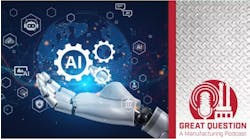Schneider Electric's Eli Daccach
The idea of a “circular economy” has become popular theme in sustainability discussions, and datacenters and edge computing cannot be left out of the conversation. With edge computing investments expected to grow 15% year-over-year in 2022, and the worsening of the climate crisis, businesses must consider the environmental impact of these new expansions.
It is time for companies to shift their thinking and implement technologies that are sustainable and recyclable from the start. All industries need to consider the entire lifecycle of IT equipment when building new edge datacenters, rather than waiting until equipment reaches end of life and is deemed useless. Placing a greater focus on the lifecycle of IT infrastructure in edge-computing centers not only helps organizations meet sustainability KPIs, but also positively affects their bottom line.
This mindset is already in play in the auto industry. Not only do auto-manufacturers sell individual parts that can be purchased to extend the lifecycle of their products, but consumers are mindful of the fact that they will likely need to repair their vehicle down the road. When their brakes fail or start squeaking, the end user takes their “equipment” to get broken parts replaced, rather than opting to throw away the entire car. Along these same lines, edge-datacenter equipment should be designed and sold with this same idea of repair over disposal.
There are several considerations organizations should take into account when building IT infrastructure that will meet sustainability standards and align with the circular economy.
Building the right equipment
Simply put, organizations need to manufacture edge equipment that is designed with green standards in mind, that will last longer, and can be recycled. In doing so, this hardware creates an edge environment that is less resource-intensive, and ultimately, more sustainable. To accomplish this, manufacturers should follow the foundations of building green equipment:
- Evaluation of resource performance: When implementing and evaluating equipment that follows the circular-economy model, organizations need to consider the overall power usage efficiency (PUE) of the equipment used in processing the massive amounts of data that our modern enterprise economy requires. By implementing more efficient equipment and keeping an eye on the amount of CO2, water, power and light used in processes, enterprises can significantly reduce their footprint, which is crucial, as datacenters are a significant contributor to global carbon emissions. When equipment providers manufacture products with resource performance in mind, the result is hardware that is sustainable from the start.
- Considering recyclability and reusability: Organizations that design green equipment must also create a plan for when products lose functionality or eventually reach end of life. Edge-datacenter equipment has historically lacked circularity, as experts estimate that the average life span of a datacenter is only 10-15 years. Programs with services for recycling, repairing, remanufacturing or retrofitting old hardware are a simple way for customers to participate in the circular economy and limit the number of products that end up in the landfill. This also optimizes the total cost of ownership (TCO), as customers can opt to repair or retrofit old equipment for a lower cost than it would be to replace it. These programs improve circularity within the organization, ultimately contributing to the greater adoption of sustainable standards in the industry.
- Preparation of environmental impact and circularity information: Another key foundation to the manufacturing of sustainable hardware is the creation of readily available information on the environmental impact and circularity of each product. In providing these details on each product, organizations give customers the information they need to make confident, informed decisions about the equipment they purchase from the start. To harken back to the auto analogy, rather than purchasing a BMW, which is known to be expensive to repair, consumers may opt to select a car that can be repaired in a more cost-effective manner. This ultimately enables the owner to keep their car for longer and reduce the TCO. Circularity information provides guidance on how to properly recycle or repair equipment at end of life alongside circular-value propositions. Customers can opt to select products that align with their long-term sustainability goals, which cuts down on future waste. Access to this information also creates transparency in the industry in which organizations are manufacturing circular products.
Making an impact in heavy industries
Circular-economy techniques are particularly crucial in heavy industries such as oil and gas, power generation, and others known to have power-hungry business models. The nature of these businesses makes it difficult for companies within the energy sector to decarbonize. These organizations need to use green-edge equipment and adopt circular-economy measures if they wish to move the needle on sustainability.
Industrial-edge computing is expanding, and as its influence grows in energy-intensive environments, the industry must transform sustainability efforts to keep operations green.
Envisioning the circular economy for edge datacenters
Equipment manufacturing can be the start of this change, as organizations work to follow strategies for designing green-edge datacenter solutions. The datacenter industry has been lagging on this transformation, and the creation of products that are made while considering resource efficiency, recyclability, and environmental impact will be hugely consequential. The world-wide shift to greener practices cannot leave edge datacenters out of the equation.
Eli Daccach is global BD leader for secure power for Schneider Electric


